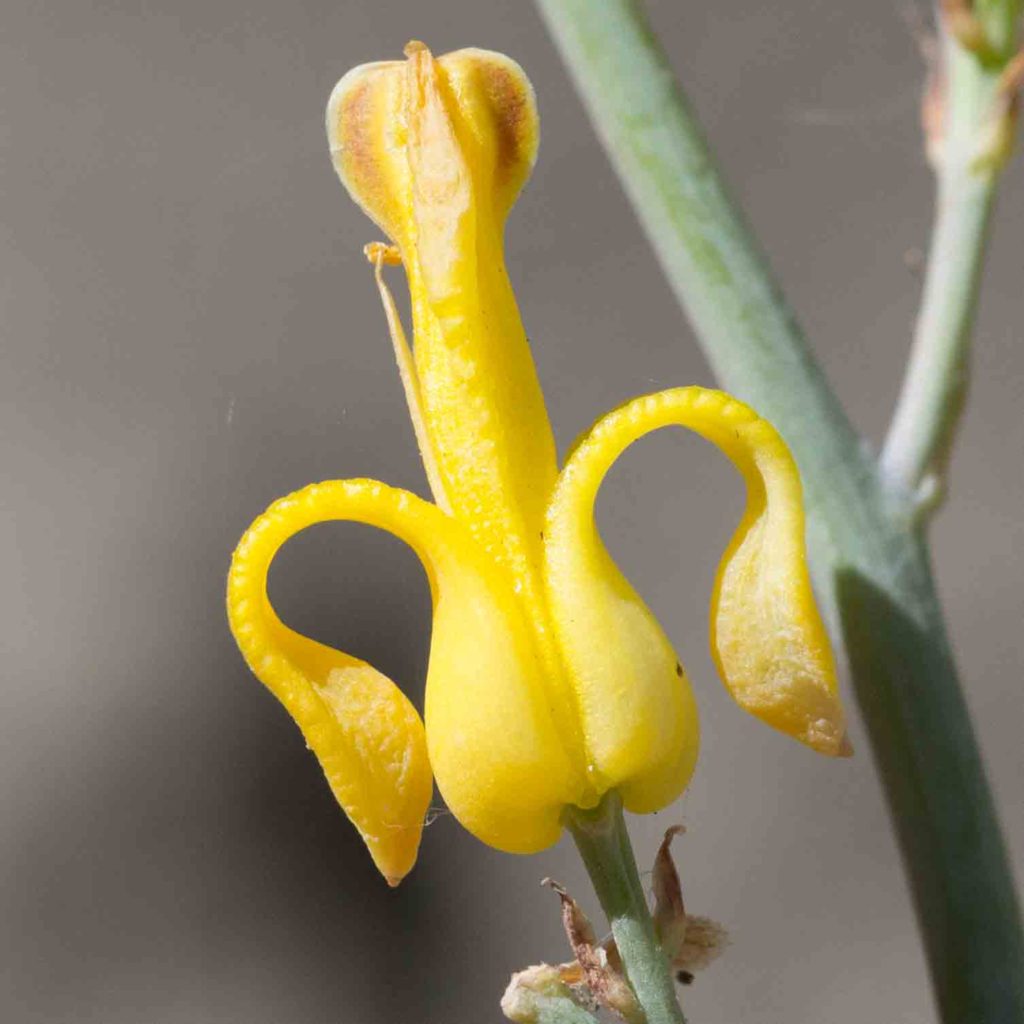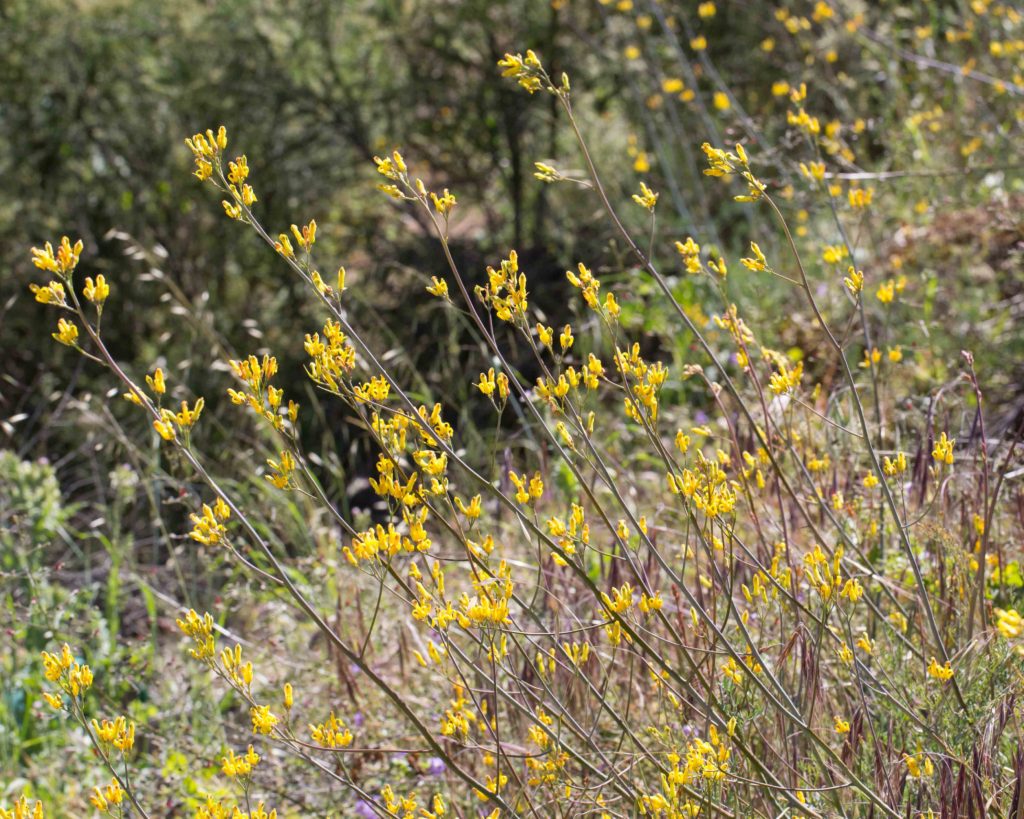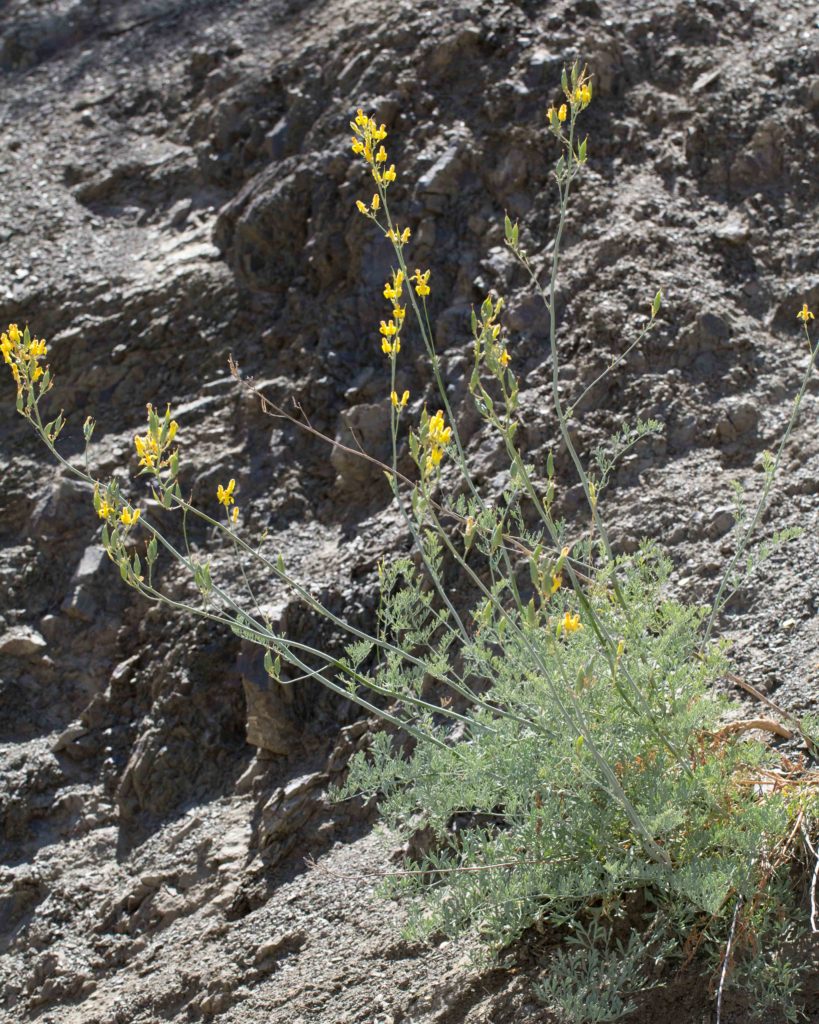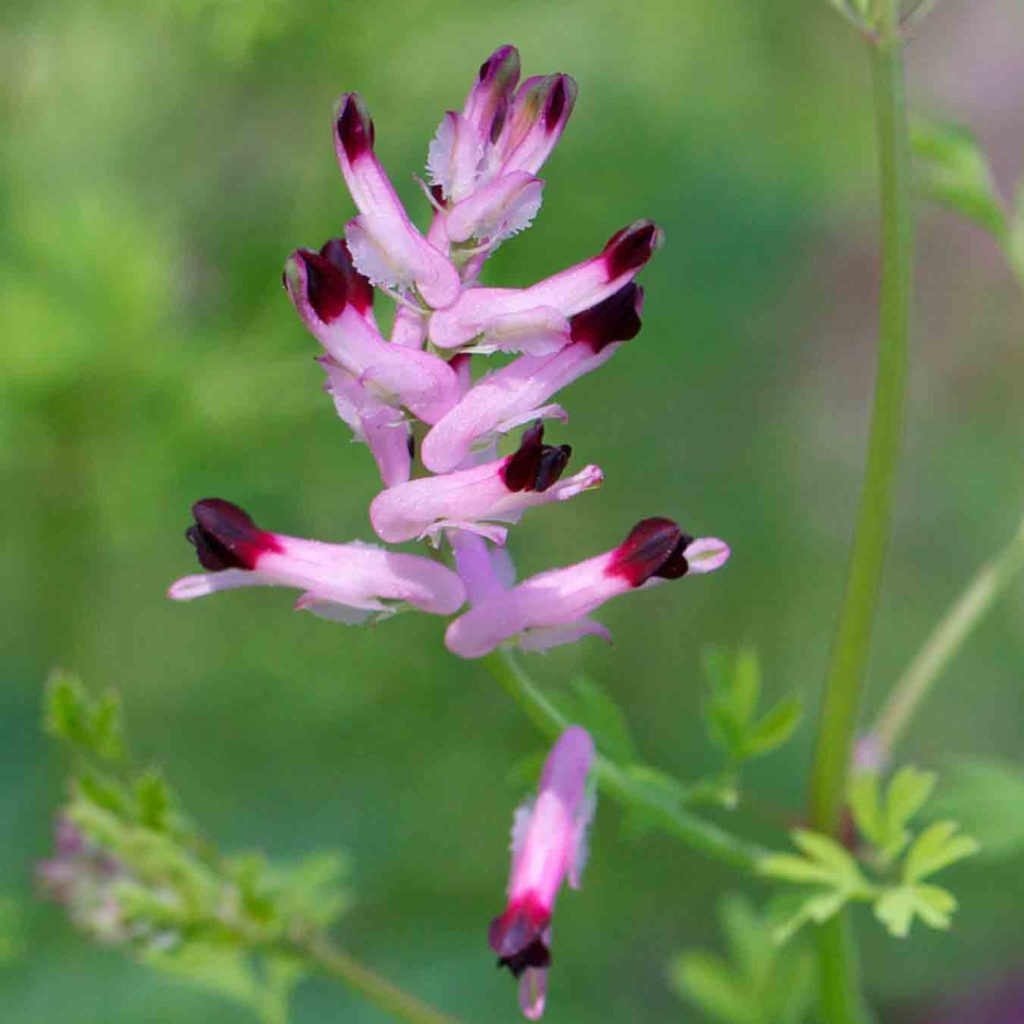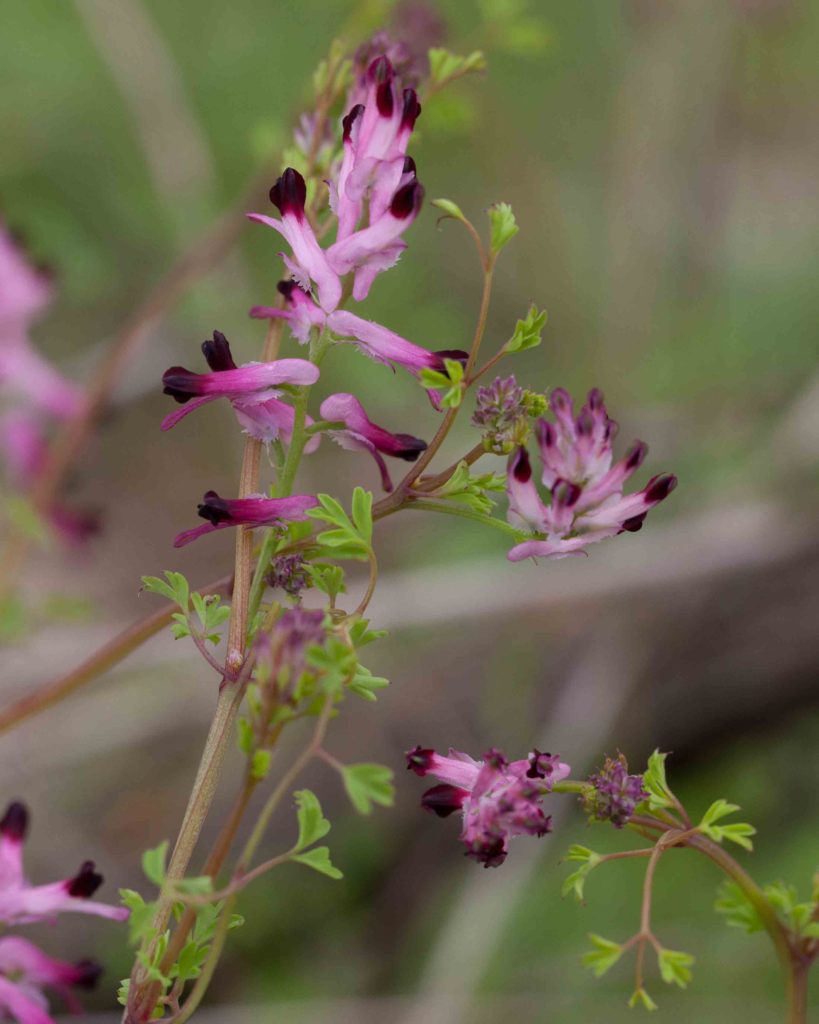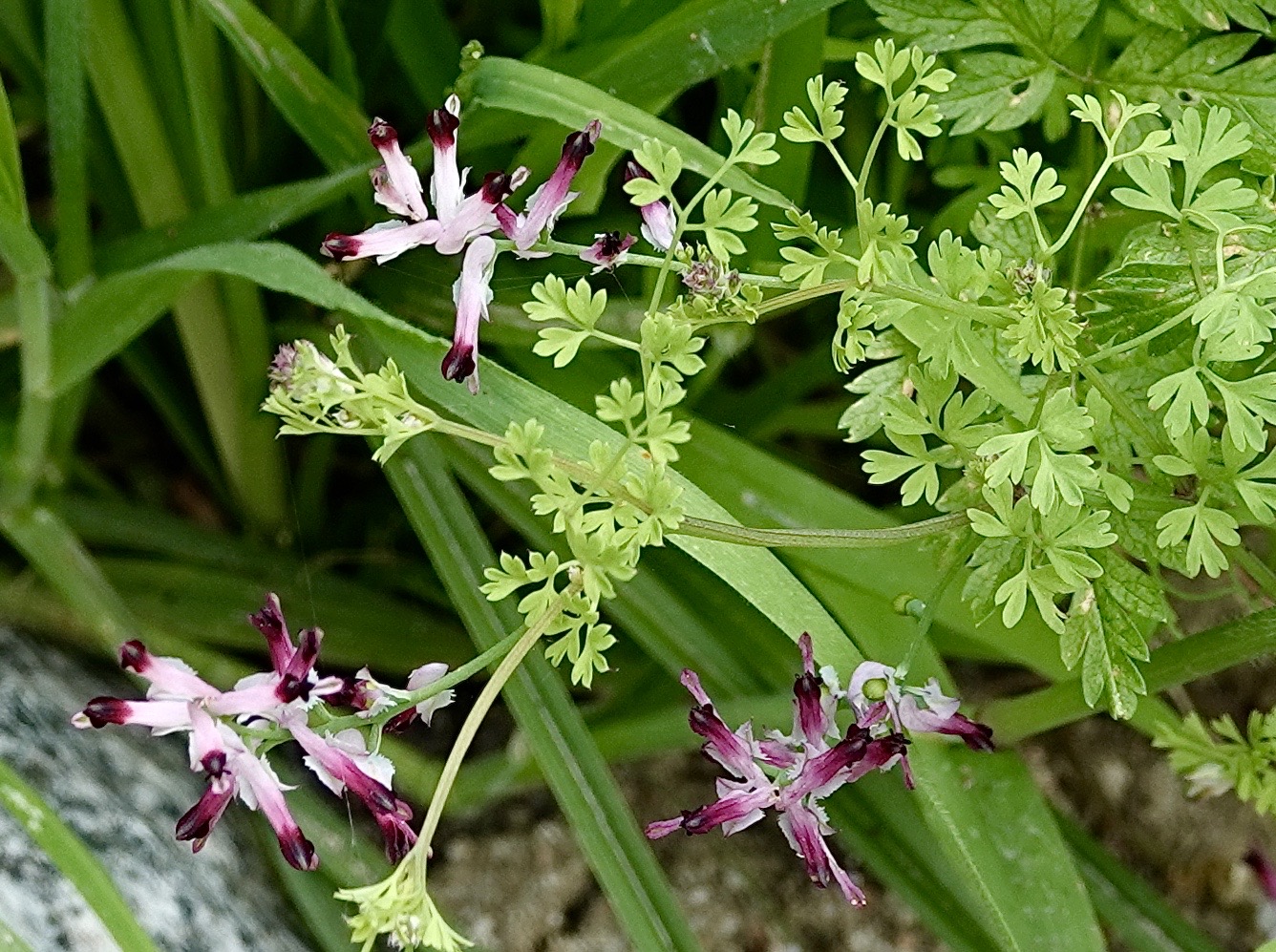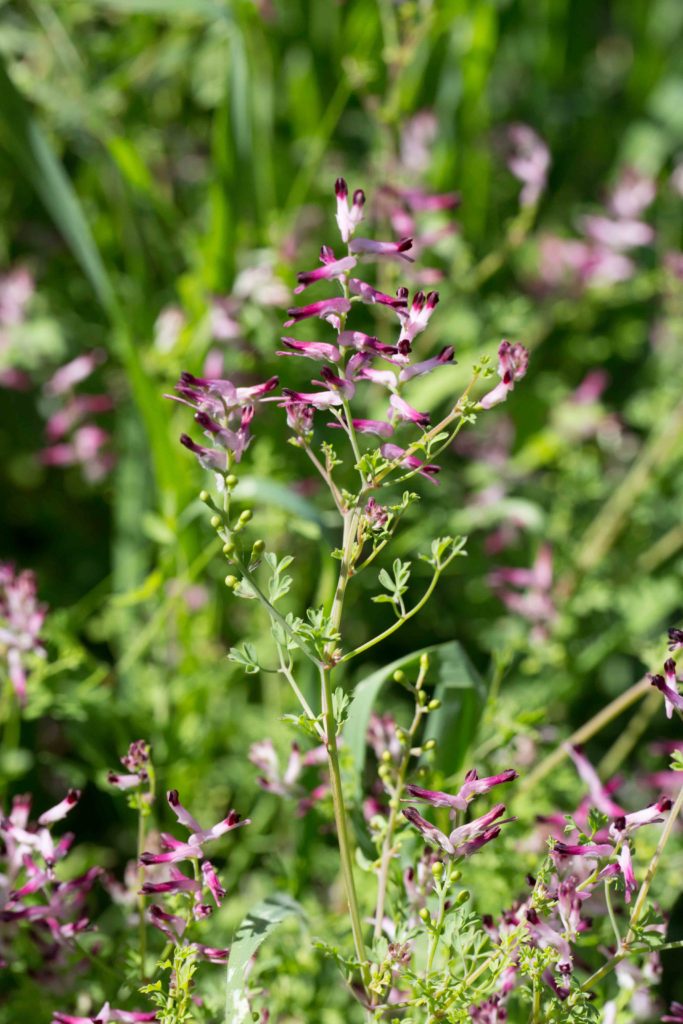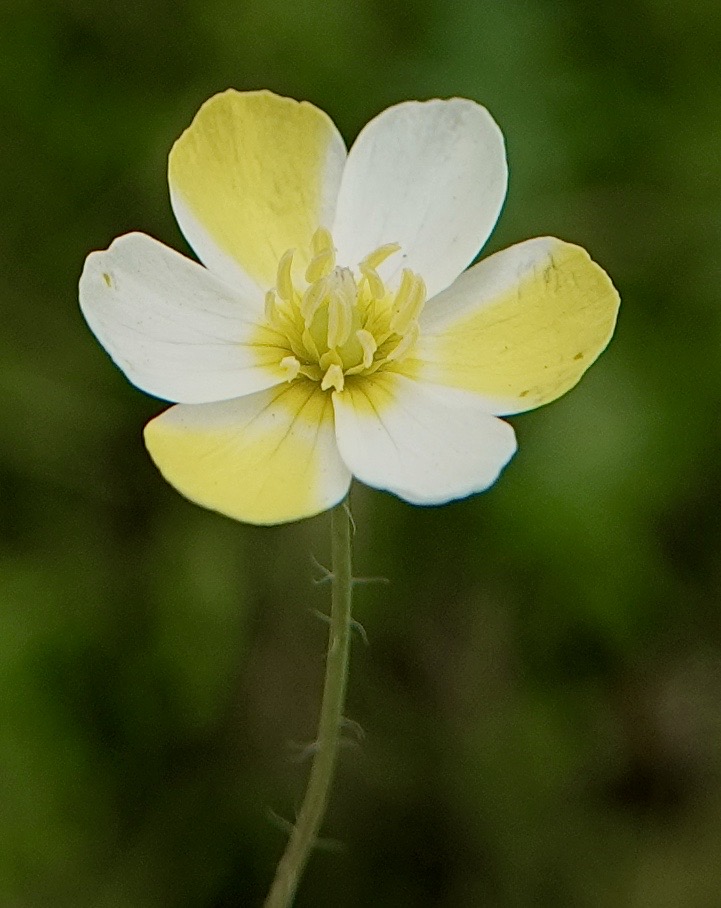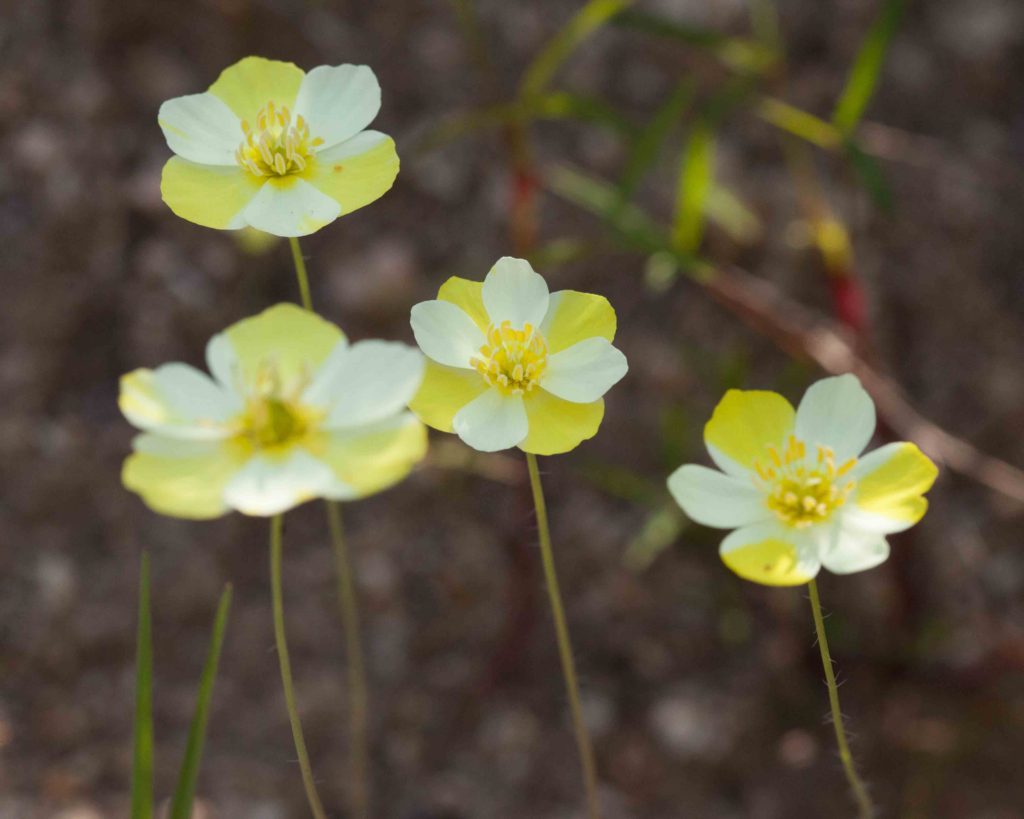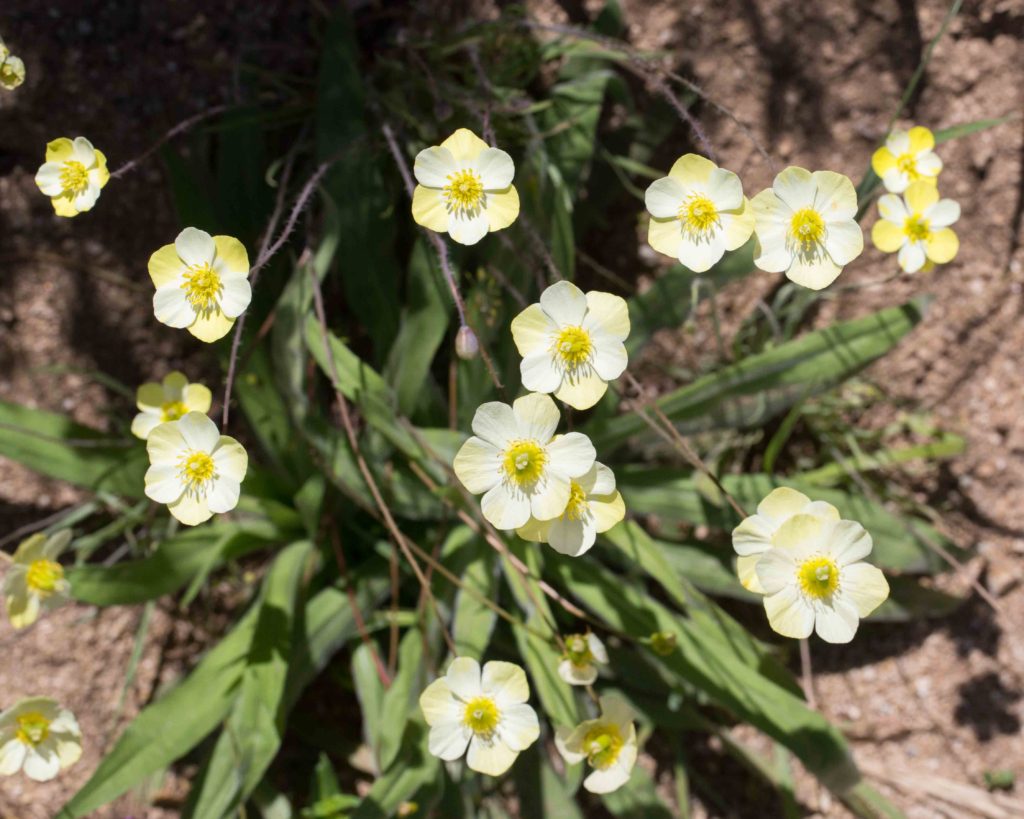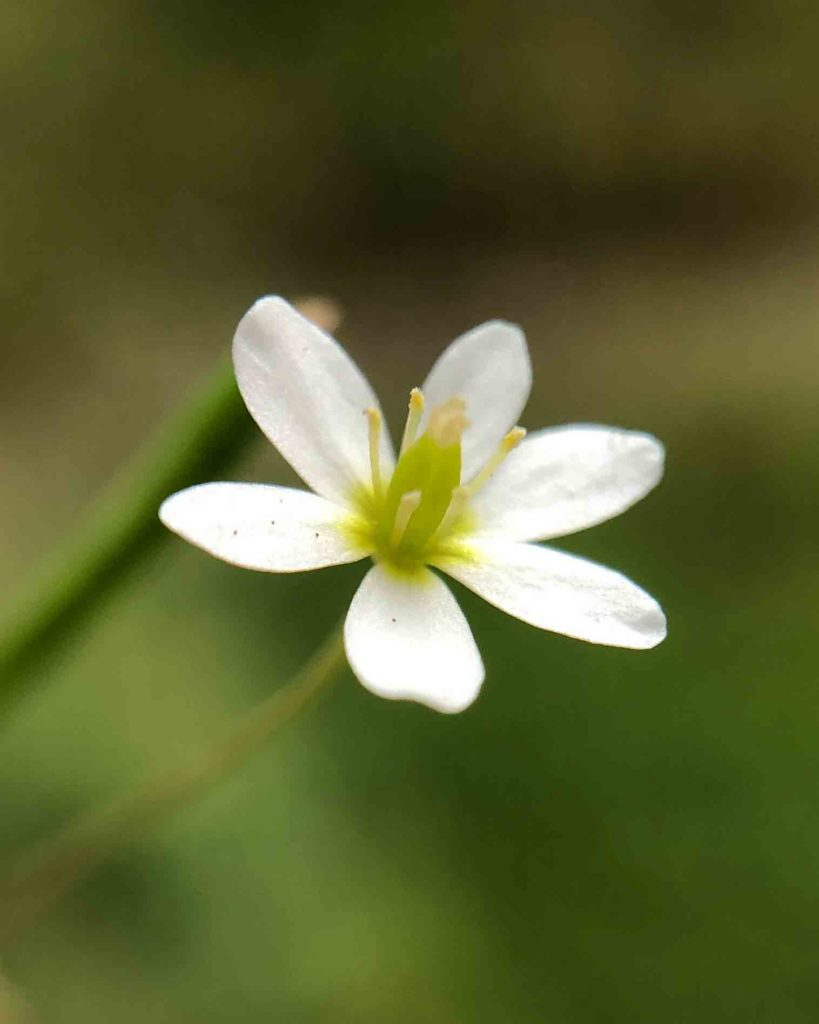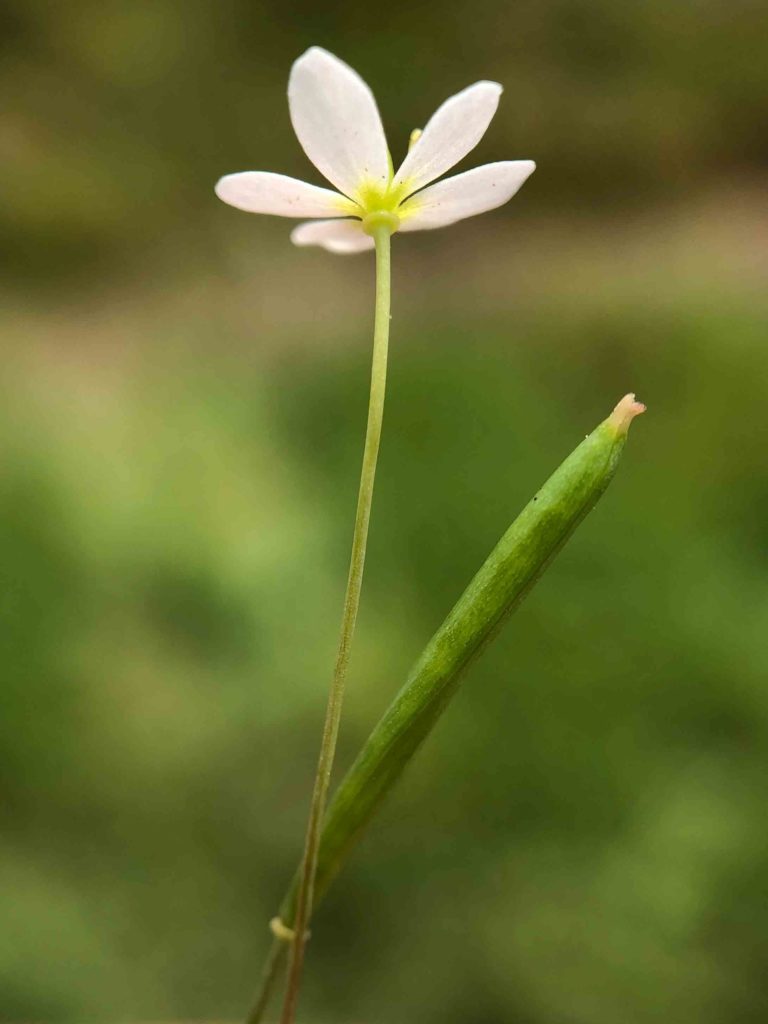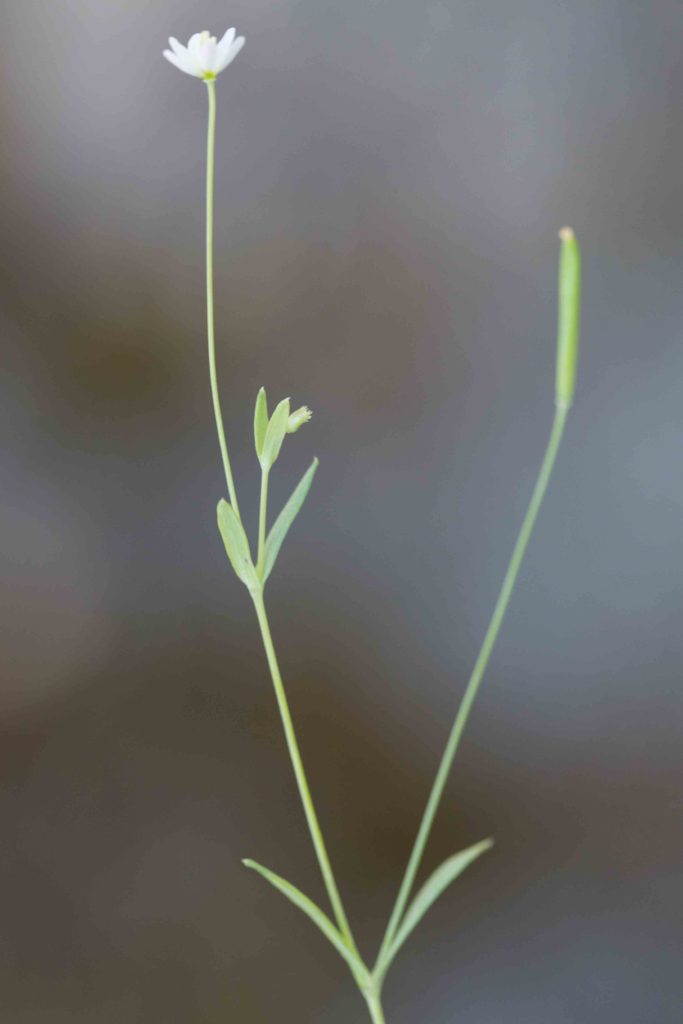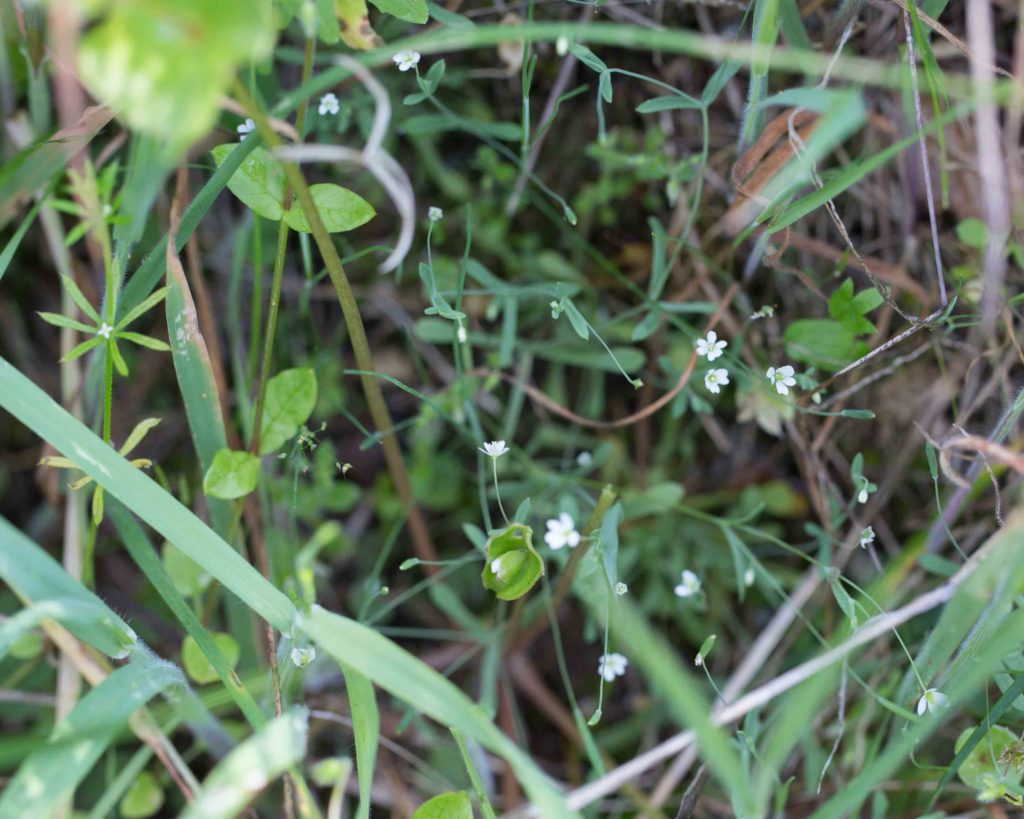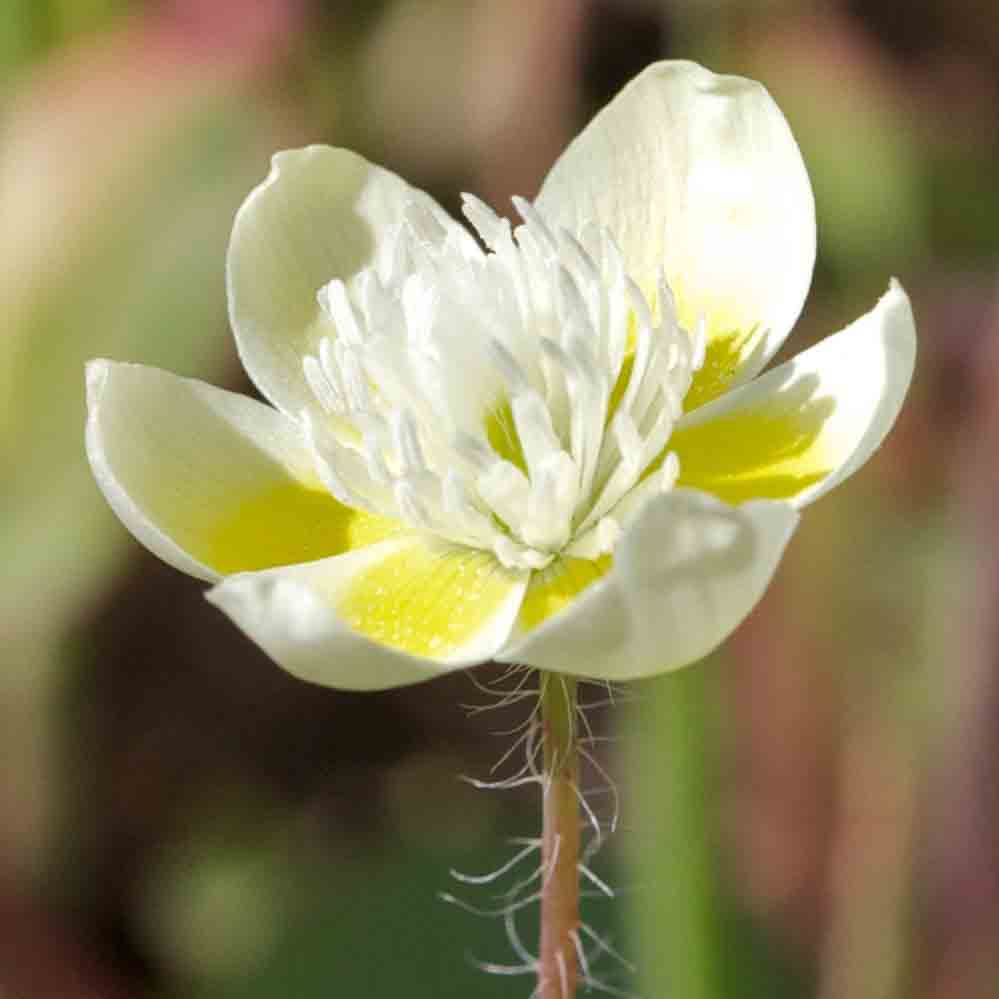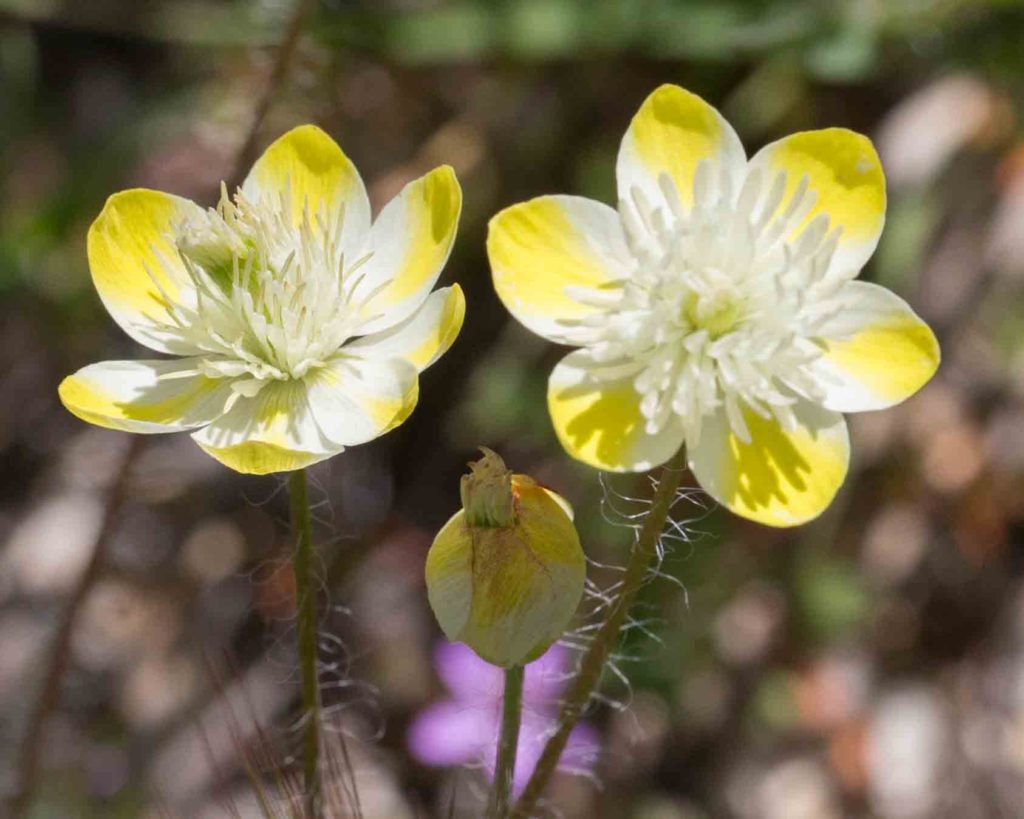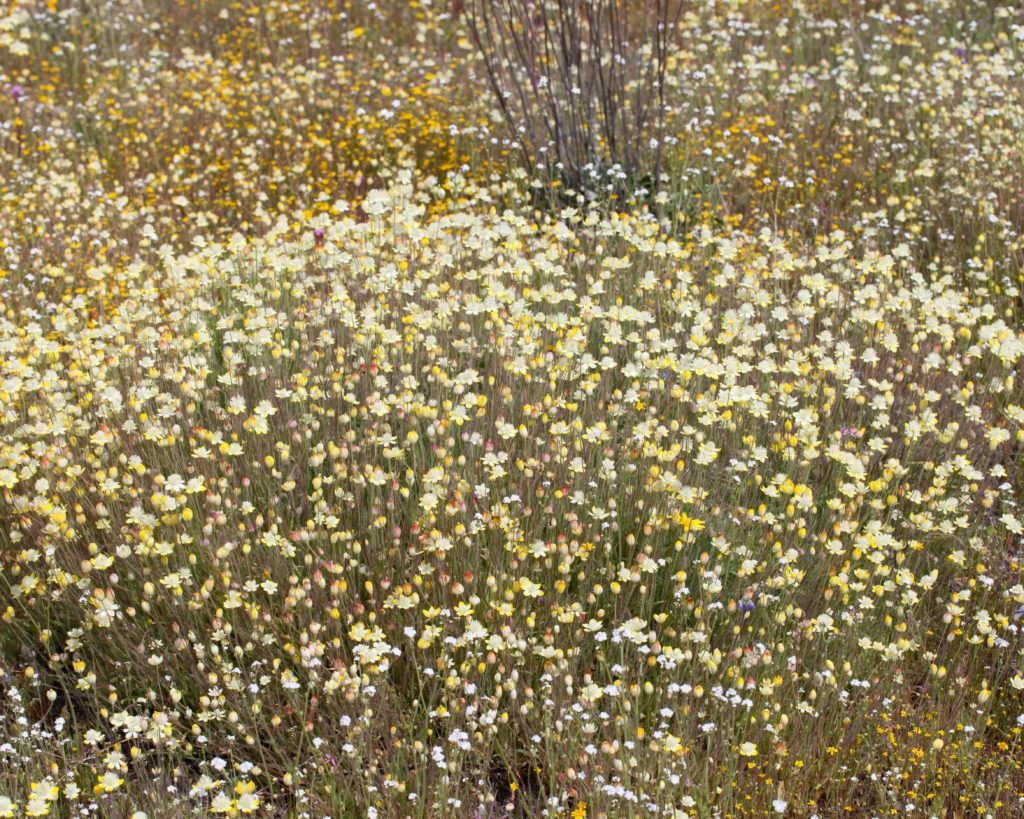Papaveraceae: Poppy Family — Various (excluding poppies)
This family has mostly regular, shallowly saucer-shaped flowers. There are usually 4 or 6 petals, and half that number of sepals. Sepals typically fall away when the flower opens. This page shows the family members not named “poppy”.
Golden Eardrops – Ehrendorferia chrysantha
Blooms:
Apr–Sept
Plant Height:
50–160 cm
Flower Size:
Large
Origin:
Native
Habitat:
Dry slopes, burns and other disturbed areas below 1100 m
Notes:
This is easily recognized by its unusually shaped, golden-yellow flowers, the two outer petals curving outward from the two partially fused central petals. The plant has leafy, erect stems, and blue-green leaves with 2-3 pinnately dissected, lobed leaflets.
Fumitory – Fumaria officinalis
Blooms:
Apr–July
Plant Height:
10–70 cm
Flower Size:
Medium cluster
Origin:
Europe
Habitat:
Shaded moist areas
Notes:
This also has unusually shaped flowers. The flowers are deep pink or purplish-red (occasionally whitish), with purple-tipped petals, up to 1 cm long including the spur. On either side of the flower, there is a 1.5–3.5 mm fringed sepal. Leaves are cauline, finely pinnately dissected, or compound. Photo #3 by CJH.
Narrow-leaved Meconella – Hesperomecon linearis
Blooms:
Mar–June
Plant Height:
3–40 cm
Flower Size:
Medium
Origin:
Native
Habitat:
Open grassy areas, sandy flats or slopes
Notes:
This flower is cream-colored, with or without a yellow base. More distinctively, it typically has 3 inner cream-colored petals alternating with 3 outer petals that are mostly lemon-yellow. If the alternating colors are not noticeable, it might be confused with Cream Cups (Platystemon californicus, see below). But it can be distinguished by the appearance of its stamens (not flattened), and by its 3 stigmas (not more). The narrow, grass-like leaves are opposite, and more or less basal. Photo #1 by CJH.
Oregon Meconella – Meconella oregana
Blooms:
Mar–May
Plant Height:
2–16 cm
Flower Size:
Very small
Origin:
Native
Rare or endangered?
Yes – 1b.1
Habitat:
Shady canyons
Notes:
This rare plant is inconspicuous. In the right-hand photo, the Goose-grass flower on the left side shows how tiny the flowers actually are. Its basal leaves are spoon-shaped, entire to minutely toothed, and 1–4 cm long. Cauline leaves are smaller and linear. The inflorescence is a single tiny flower with 6 white, 1–5 mm long petals on a narrow peduncle. The receptacle has an expanded ring beneath the sepals. The fruit is linear and surprisingly long at 2 –3 cm.
Cream Cups – Platystemon californicus
Blooms:
Mar–May
Plant Height:
3–30 cm
Flower Size:
Medium
Origin:
Native
Habitat:
Sunny, grassy places
Notes:
This delicate flower typically has cream petals, with a yellow base, yellow tip, or both. The globular shape of the half-opened flower is distinctive, as are the hairy peduncles, and dense grouping of its many white stamens with their flattened filaments. Young buds are nodding. It could be mistaken for Narrow-leaved Meconella (Hesperomecon linearis, see above). However, the number and appearance of its stamens are different and it has at least 6 stigmas. It can be found in profusion.
